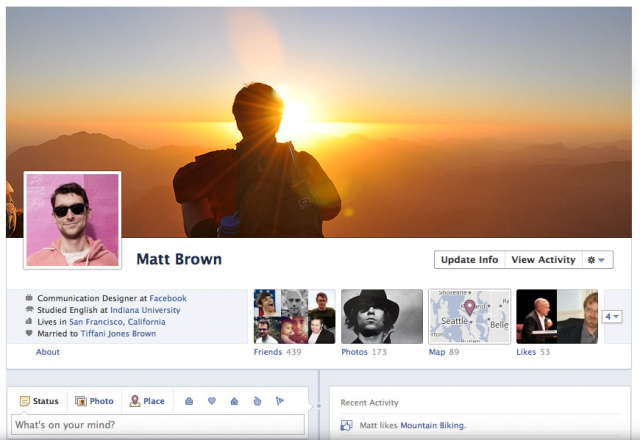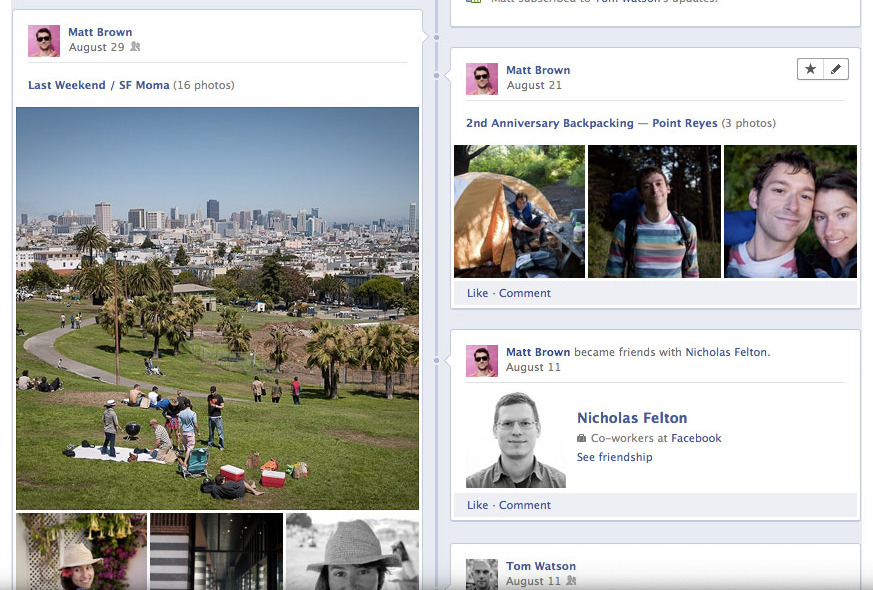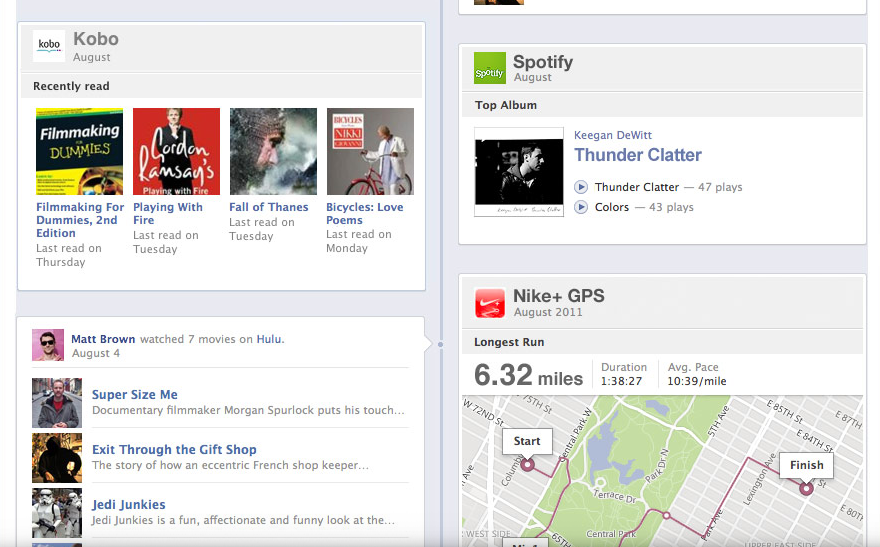at todays f8 event facebook unveiled timeline



At today’s F8 event Facebook unveiled “Timeline,” a new mode for presenting one’s life on Facebook. Zuckerberg explains, “It’s the heart of your Facebook experience, completely rethought from the ground up. Timeline is the story of your life.” You can read more about Timeline at TechCrunch, courtesy of MG Siegler.
There are two macro trends taking place here. First, Facebook is shifting towards ‘Action’ based representation. Second, web design is increasingly becoming screen-agnostic. I’ll write about the second point tomorrow, so let’s look at the Action trend. (Part II can be found here)
Action vs. Capture: Running Away from Google+ Towards Tumblr
I agree with MG, who says Timeline “looks a bit like a really nice Tumblr blog.” Beyond looking like Tumblr, the new Facebook feels like Tumblr. It’s been designed to emphasize conscious expression, or user actions. For example, your profile picture is no longer the feature of your page. Additionally, it aims to cycle through relevante actions, retaining more evergreen content on top and pushing down the immaterial.
Facebook has never been as dynamic as Tumblr; it’s always been more about ‘Capturing’ a person with high fidelity and presenting them online. For a stark example of Capturing one only has to turn to Google+, which has taken the Capturing model to new extremes. The ridiculous naming rules coupled with a dry sorting of complex relationships into clearcut circles communications to users that Google+ exists mainly to ingest your data for data cleanliness purposes for the benefit of Google and their advertisers. Expression is an afterthought, something you do after you’ve uploaded yourself.
Tumblr, on the other hand, doesn’t care about your data so much as your expressive actions and reactions. On Tumblr, you communicate yourself one action at a time. And unless someone has been following your actions for some time, you’re only as clever, smart, joyless, or cool as your last action. Go dig through posts from years past. I’m sure you’ll gasp in horror at more than a few, but that’s alright. No one’s looking at them anyway. Twitter uses Action as well.
When it comes to presenting people online, I find the Action model Tumblr employs to be much more natural, humane, and interesting. The Capture model is cold and commercial; it’s more like an Excel sheet than a canvas.
With this new Timeline design, Facebook is sprinting towards the Action model. Unlike Google, they may be able to embrace Action while maintaining an advertising business because of their critical mass and the increased technological familiarity of said usersbase. Unlike Google, they already have high fidelity data. They’ve lived through their cold, capture years. They’ve kicked off false names (often erroneously) and are ready to move beyond. I think this will work well for them, once their users calm down from the shock (which they always do, no matter the noise.)
Facebook’s shift spurs a few questions:
- How will Facebook impliment advertising within an ‘action’ network? Twitter has struggled so far…
- How long will it take the average user to produce a great looking page? One issue with the Action model is it allows for malformed content or other ugliness. The large image on every page won’t look as good as the ones Facebook demoed today.
- Have we moved away from the Capture model or has it become unnecessary, given the ubiquity of technology? When Facebook launched, the average amount of content each user produced was sparse so such prompting proved necessary.